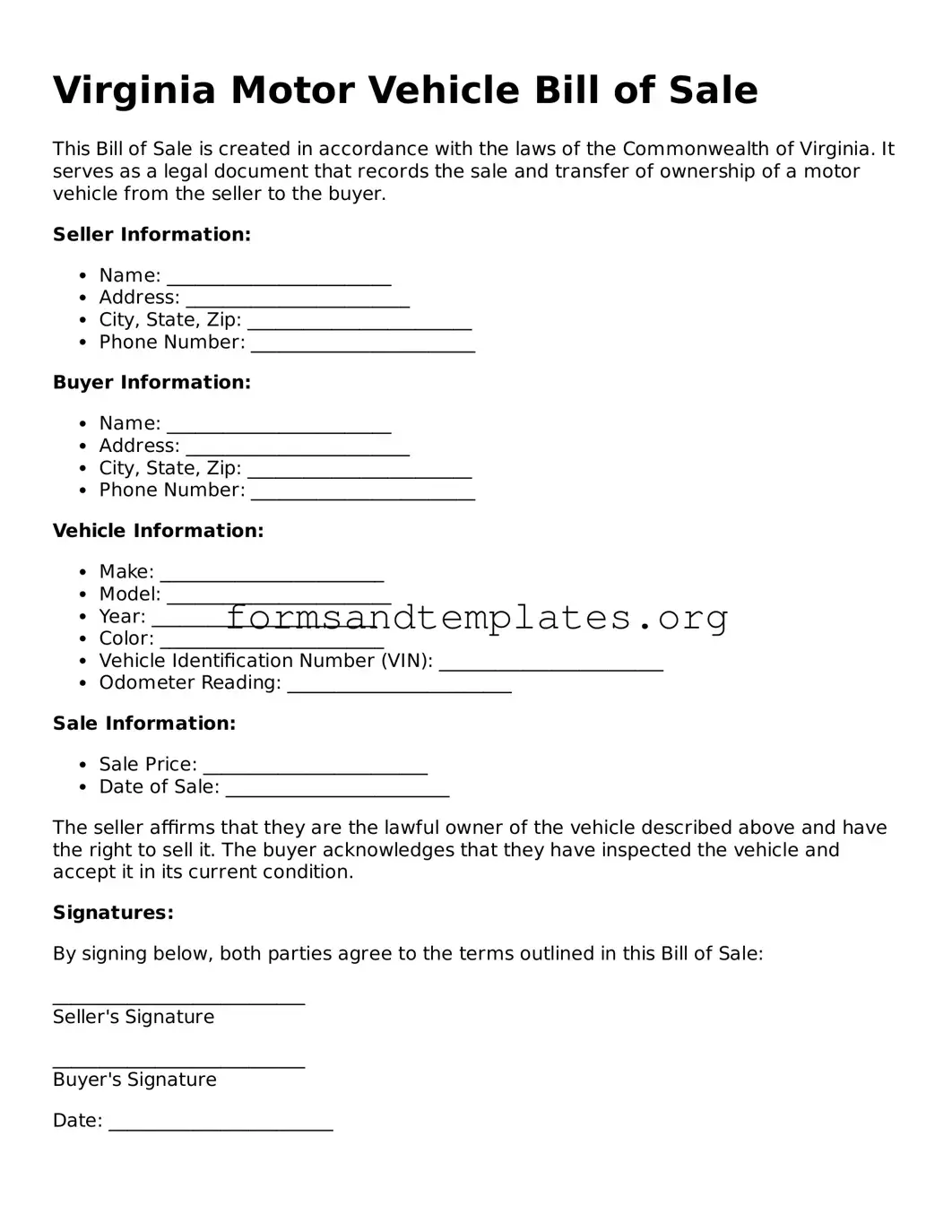Virginia Motor Vehicle Bill of Sale
This Bill of Sale is created in accordance with the laws of the Commonwealth of Virginia. It serves as a legal document that records the sale and transfer of ownership of a motor vehicle from the seller to the buyer.
Seller Information:
- Name: ________________________
- Address: ________________________
- City, State, Zip: ________________________
- Phone Number: ________________________
Buyer Information:
- Name: ________________________
- Address: ________________________
- City, State, Zip: ________________________
- Phone Number: ________________________
Vehicle Information:
- Make: ________________________
- Model: ________________________
- Year: ________________________
- Color: ________________________
- Vehicle Identification Number (VIN): ________________________
- Odometer Reading: ________________________
Sale Information:
- Sale Price: ________________________
- Date of Sale: ________________________
The seller affirms that they are the lawful owner of the vehicle described above and have the right to sell it. The buyer acknowledges that they have inspected the vehicle and accept it in its current condition.
Signatures:
By signing below, both parties agree to the terms outlined in this Bill of Sale:
___________________________
Seller's Signature
___________________________
Buyer's Signature
Date: ________________________
This document may be used for registering the vehicle with the Virginia Department of Motor Vehicles. It is advisable to keep a copy for your records.
